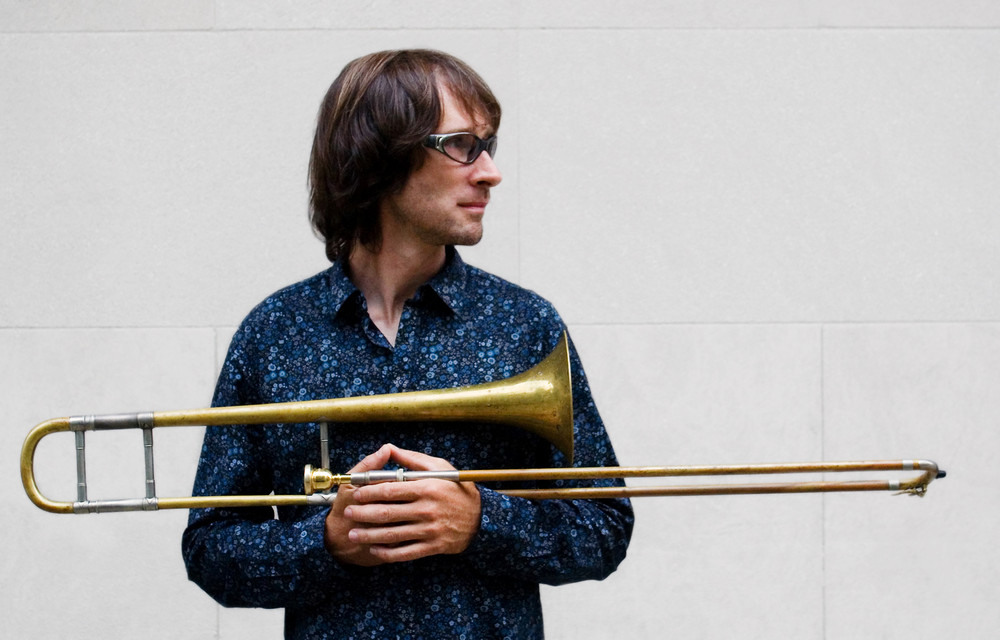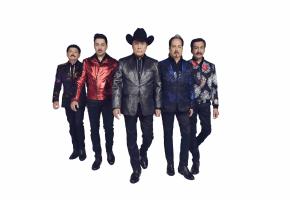Amaranta Wright: Tell us a bit about your journey to jazz and specifically Latin jazz
Chris Washburne: I grew up in Ohio, the middle of the US, very close to the Rock’n’Roll Hall of Fame, which isn’t a coincidence because a lot of rock musicians come from there. I was a huge heavy metal fan and wanted to be a rock star but the only caveat was that I played the trombone and it’s very difficult to be a rock star playing the trombone. At some point, my dad took me to see the Duke Ellington Jazz Band where I first saw trombone players take a solo and function as lead guitarist. Needless to say, I started in a Led Zeplin cover band trying to play lead guitar on trombone, which was a bit of a disaster!
So, I started playing in jazz bands and was not exposed to Latin music at all. Then I saw Tito Puente play at a club in Cleveland while I was in College and I thought “What’s that!” That was the seed. But, it wasn’t until I came to Boston, doing my masters at the Newington Conservatory, that one day a fellow trombone player knocked on my door and said “I need help tonight.” He couldn’t make the gig and asked me to play it. I asked “what kind of music was it?” and he said “salsa and cumbia” and I said “what’s that?” He said “don’t worry just play loud and they’ll love you.”
So I went and I realised this was another music where trombone also played a central role and I loved it. I immediately went to a record store and asked the guy at the counter for some Latin Jazz records…he looked at me and smiled and said “these are the only two albums you need.” They were Eddie Palmieri’s White Album and Son of Latin Music. I studied the Barry Rogers solos as if they were John Coltrane's or Miles Davis'. They just blew me away, and I said to myself “that’s what I want to do”. When I went to New York, at the second gig I had, Barry Rogers was the other trombone player and within a couple of years I was playing with TIto Puente’s band.
AW: You must have been a pretty good trombone player!
CW: Well, I was pretty good…but the difference I think was that I immediately saw that I had to take the music very seriously. I remember Barry Rogers saying to me: “you sound good but you only play the trombone…if you are playing in a jazz band, you gotta know all the other instruments, not well, but enough…go buy yourself a set of bongos and a set of conga drums.” So I did, I started learning from the inside. Also was lucky enough to come at a time when there was a lot of live Latin music being played, so I was gigging six times a week and quickly started making a living. But the main thing was that realised early enough that the music deserved serious study, so that helped.”
Jose Luis: So when did you start to realise that there is a connection between jazz and and Latin music that wasn’t being been acknowledged?
CW: I already had jazz and classical degrees and I knew I wanted to be a studio musician, but I also knew it would be difficult and that I would have to make another living so I applied to Grad school at Columbia and NYU, which had the only Latin Music Ethnomusicology programmes. As I began to travel to Cuba and Brazil for research, I simultaneously started to get a lot of work as a musician in New York, gigs in New York that I didn't want to lose. I also realised that there was so little research and so many gaps in the written history of Latin music in the US, so much work was needed in terms of research but also advocacy. So, I went back to New York and started writing 'Sounding Salsa' which was about the scene at the time, the musicians I was working with in New York, who were absent in the books, so that their stories could be told.
While I was doing that book project, someone asked me to write an article about the history of the clave (the rhythmic pattern used in Afro-Cuban music). The day before I was due to give it in, I was sitting in the corner of salsa club in New Jersey working on and the musicians asked me what I was writing about…all Dominican, Puerto Rican Colombian, Nuyorican musicians from New York. When I told them they said “la clave? That’s easy! Its in all music… it’s in Beethoven, Louis Armstrong, Count Basie, Duke Ellington. It’s in hiphop, I’m like ‘what?’. I kind of knew it, but they got me to realise the fundamental role that Afro-Cuban music played in so many music traditions around the world.
The more I listened the more I realised they were right. When researching the music of New Orleans, it was everywhere and, researching the history, I soon realised the birth of what we call Latin jazz was simultaneous to the birth of jazz. It was the real jazz; Caribbean influenced performance practice. The more I researched the more I realised it was so central to American music, that I could trace the history back to the 1720s when the first enslaved peoples came to the Louisiana territories. Where did they come from? Guadaloupe and Martinique. Right away, Afro-Caribbean culture had a profound impact on the development of jazz. Western musicians, primarily jazz musicians, don't tend to make the connection and some even have a disdain for Latin jazz as if its not the real thing, or a byproduct, when its actually part of jazz's roots. On the other hand, Latin musicians tend to respect jazz and can play it.
So, that’s why I started, there wasn’t a reciprocity between the jazz and Latin jazz world and I realised my second book needed to be a revisionist study to correct the lost history and the erasure that happened. Since Plessy v. Ferguson 1896 (the supreme court ruling that upheld the constitutionality of racial segregation) and the ‘one drop’ rule, history has been written in a very black and white way and even music writing takes the 'great man' model…either focusing on great white musicians or great black musicians; anyone creole, mixed race, mulatto gets erased. So I wanted to point out how that happened, how it came to be that historical documents don’t talk about Latin jazz, where Mongo Santamaría gets a paragraph or Machito are in a footnote, rather than central figures in jazz.
It’s insane, you cannot understand society and popular music today without understanding the impact of Machito or all those Caribbean musicians in New Orleans. How did JLO or Marc Anthony come along? Why is the biggest no.1 on the billboard album chart history of popular music sung in Spanish? Those musicians set up the possibility for Bad Bunny to shift into the centre of global music, I mean, 70 years ago Perez Prado made a hit counting to 9 in Spanish. So we need to reassess the notion of history in the US as a black and white country because it’s not and never has been.
JL: Ha ha, you are like the professor I never had!....so, you played with some of these guys, how was it to play with Tito Puente…
CW: It was a dream come true right? I mean you don’t get stars like Tito any more…a pop star who was also an amazing all round musician. We were on a tour once going to Argentina with Celia Cruz, La India, Marco Anthony Jose Alberto (El Canario) and Tito’s bands was backing all those artists. All the musicians were in economy and the stars in first class and they screwed up on the tickets and by mistake I got a first class ticket where the stars are. Tito comes and sits next to me. So had 9 hours with him. In the middle of that flight, he suddenly realised he had I forgotten his music. He asked what we were doing, what the size of the band was, how many horns etc. I told him it was 6 horns and then he asked me if I had any music paper and a pen, which I gave him. He began to write out and re-scored three of his parts, the key notes of the melodies from his head. IT’s very difficult to do that, let alone for a percussionist. After an hour, He handed me the sheets and he asked me to make copies and them out in rehearsal to the musicians. When I handed them out they were note for note perfect, not one mistake. I still have those parts in his writing! So, yeah to be on stage with someone like that, that has that knowledge and ability, amazing. He would be up front when we were playing solos, and every time he noticed something interesting he would look behind. He was always on it.
JL: Wow, that's an amazing story. So Did you get a chance to see our list of Latin Jazz pioneers?
The list is awesome, so…you have Machito, who with Mario Bauza married big band traditions to Latin music. In the late 1930s, at the very beginning of the civil rights movement, here are a group of dark-skinned musicians from Cuba arriving in Harlem, asserting their pride in their African heritage in a very public way. They had a huge resonance. Infact, Machito and his band played more weeks at the Apollo theatre (the premier black performance venue in the world) than both the Duke Ellington and Count Basie orchestra. They were very popular amongst black audience and also played a central role in the civil rights movement. And that’s never been recognised.
Chano Pozo, was the first collaborator with Dizzy Gillespie as he launched a new way of performing. Dizzy was like a marketing entrepreneur, he was the first to label the music differently and coined the phrase Cu-bop…in those 2 years before CHano Pozo died, their collaboration opened up a world of music to New York, the were pioneers and the reason why the conga drums became central in Latin Jazz and Latin dance music.
Mongo Santamaria followed in Chano’s footsteps with charting successes in the 1960s when Jazz started to wane in popularity. Cachao was central in developing the mambo and cutting edge changes of styles but most central were the recordings that he did in the 1950s in Cuba, the Descargas (jamming sessions) which allowed Cuban musicians to show off what they did.
Tito Puente was central to the development of the mambo and had a most important Latin jazz band of the 1970s. He was born and raised in NYC so had a real jazz sensibility and great understanding of both traditions, unlike Chano Pozo who was entrenched in Cuban music. Chico O’Farrill was a great arranger and band leader and was able to take his music into Hollywood and further disseminate it.
Candido Camero, who I played with many times was the first to play more than one conga drum simultaneously and the reason you now have up to five conga drums in a band is because of him. He also played in pop bands, did Hollywood and even played with Frank Sinatra I think. Francisco Aquabella was important because he was centred on the West coast and shows how spread out Latin music is, he also promoted the sacred music of Cuba. Carlos Batato avldez , the coolest Conguero ever…was the only conguero who could tap dance on his Conga drums in the middle of the set , another one who collaborated with very famous Jazz musicians.
So, What I see here Jose, in this list, is that you are very conga heavy, which is fine!
JL laughs…
CW: Nothing wrong with being conga heavy! I would add Ray Barretto and the reason for that is that it was Ray who figured out how to play the swing rythmn on the Conga drums better than anyone else. He was a huge jazz fan from the outset, he always introduced himself as a frustrated Jazz drummer. When I played in a big band for 11 years at the Nuyorican Poets Cafe, he would often come on Thursday nights and he would sit in on drum set and only wanted to swing on the drums. There’s a recording of ‘Manteca’ with Red Garland Trio where he swings so well with Art Taylor, he could swing with the best of them. He was a also a NEA Jazz Master, the highest jazz award that you can get, along with Candido and Eddie Palmieri.
JL: Yes Eddie! Eddie is my favourite is my favourite band ever, the sound of Venezuelan salsa is the sound of Eddie Palmieri. But we were saving Eddie for another list.
CW: The thing about Top 10s is that they spark the interest of the readers and listeners and we hope that’s the start of an exploration. If I were in charge of this top 10 list, which I don’t know if I could do it because it’s so difficult to choose just 10, I would want to include Jelly Roll Morton, Louis Armstrong and Duke Ellington because in many ways you can’t understand the popularity of Chano Pozo, Mario Bauza, Machito and Dizzy Guillespie without understanding what was happening in their formative years, because they were listening to those guys. I mean, Louis Armstrong recorded Maní (the Peanut vendor). In my book I argue that you might want to go back even further than these masters and say that the pioneers of Latin Jazz were the musicians who were jamming in Congo square in New Orleans in the 19th century, because that’s where these rhythms were passed along. But its great that you start with these guys when the term Latin Jazz starts to emerge and we start to think about what it is and how we think about Latin Jazz today.
Listen to this interview on our podcast here
Chris Washburn is author of Latin Jazz: the Other Jazz and Sounding Salsa. For more info visit: https://chriswashburne.com/
See our Top 10 list of Jazz Pioneers here
















